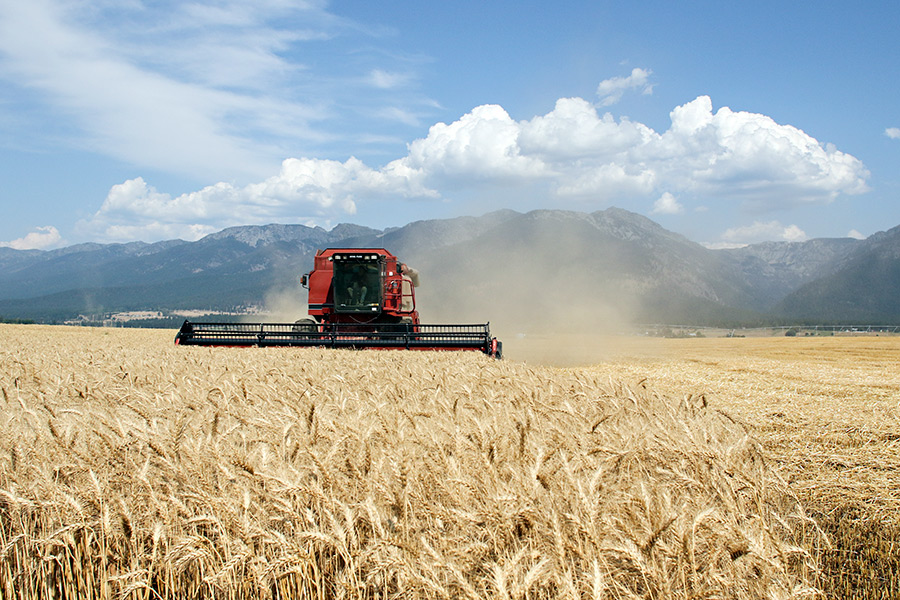An unprecedented summer defined by drought and wildfires is barely in the books and local farmers are already bracing themselves for another year of potentially troublesome weather.
El Niño is poised to become one of the most powerful on record, leading climate scientists to strongly suggest that the Pacific Northwest could experience a dry, warm winter.
In a national teleconference with media on Sept. 10, climate experts said they are 95 percent certain a strong El Niño will sweep across the Northern Hemisphere in the coming months before gradually weakening in spring 2016. The tumultuous weather system could bring heavy rainfall to parts of the southwest, including drought-stricken California, but it could also lead to drier, warmer than average conditions in the upper Rockies, where a drought has worsened in recent months. Predicting the exact impacts of El Niño, especially in the Pacific Northwest, has proven difficult in the past, and the National Weather Service is waiting until next month to release its official winter forecast.
“When you deal with climate in general and long-range predictions, there’s always some degree of uncertainty. But this is one of the three strongest (El Niños) we’ve seen,” said Mike Halpert, the deputy director at the National Weather Service’s Climate Prediction Center.
Halpert said the sea-surface temperatures in the Pacific Ocean are 3.6 degrees Fahrenheit above average and are the highest temperatures since the historic 1997 El Niño. In the winter of 1997-98, the strongest El Niño on record hit the U.S. with unusual extremes in parts of the country, including flooding in the southeast and California and an ice storm in the northeast.
Northwest Montana suffered an exceptionally dry, warm winter that year. According to NWS data, average snowfall was down roughly 4-6 inches each month from November through March. Moisture levels were down every month between November and April except for March.
Trent Smith, a meteorologist with the NWS in Missoula, noted that it would be inaccurate to use the 1997 El Niño as an exact foreshadowing of the approaching winter.
However, the 1997 event did illustrate the brunt of El Niño at its worst.
“That year was definitely drier and definitely warmer than normal in Kalispell,” he said.
Kalispell is coming off its driest summer on record after a meager winter with lower-than-average snowpack that rapidly melted. Local agriculture producers are reeling from the effects of extreme drought, which continues to plague the region and fueled large wildfires over the last two months.
“The old saying is, ‘Seed in the dust, your bins will bust.” Well, we’re seeding in the dust,” said Tryg Koch, co-owner of Heritage Custom Farming with Lee Buller, which harvests across the Flathead Valley.
“We have no choice but to keep a positive attitude. We’re totally relying on Mother Nature. It is what it is. I’m not going to say I don’t lose sleep some nights though.”
Gov. Steve Bullock heard concerns from area producers last week while touring the Northwestern Agricultural Research Center in Creston, where scientists are studying water-use efficiencies that could help farmers. The research center is hoping to develop strategies that could improve irrigated water systems and identify the critical timing for watering various crops.
“This is critical. This is something that will solve the problems on the ground and it could also have the potential for commercialization that could help the entire state,” Bullock said of the research center and its efforts.
Between June and August, Kalispell received 1.09 inches of rain, breaking the previous three-month record low of 1.40 inches in 1929. Rivers in the region have below normal to record-low streamflows for this time of year.
Mother Nature provided temporary relief in early September; 0.65 inches of rain fell in Kalispell Sept. 3-5 and temperatures have cooled. Another quick rain storm is expected to arrive this week.
“You’ve got to have faith. If you don’t have faith, you’re in the wrong business here,” said Dan Lake of Lake Seed, a family owned and operated farm in Ronan. “We’ll see about El Niño. If we end up with another dry winter like we went through, we’ll be in a world of hurt. We are out of water.”
